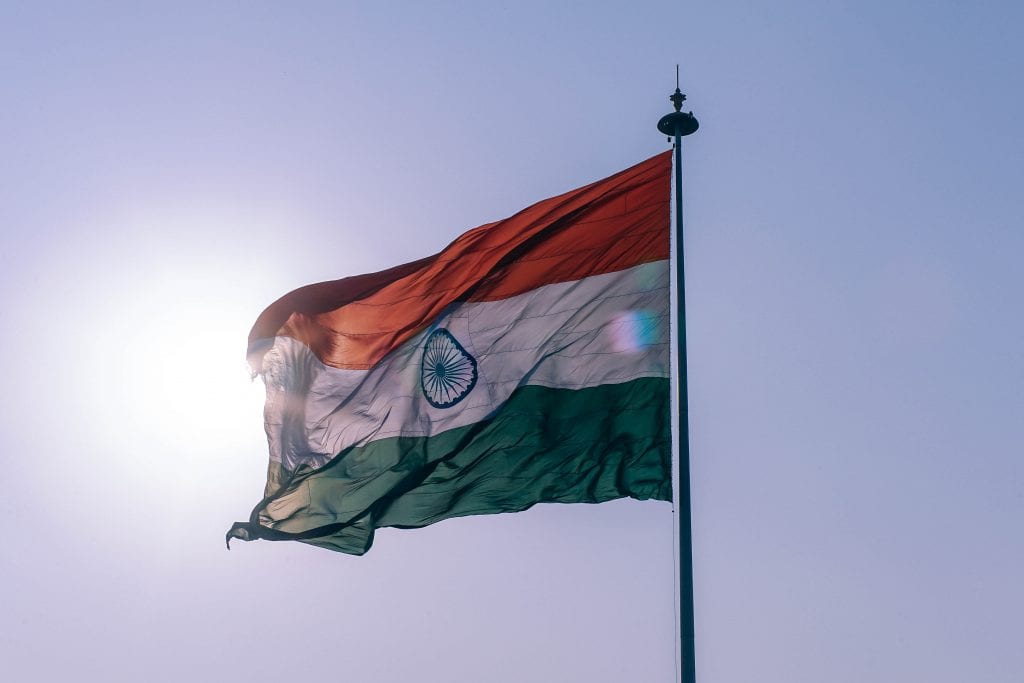Study Links Ethnic Violence and Natural Disasters in India

Didara Nurmanova, a Ph.D. candidate in the Security Studies program in the Political Science Department, is conducting a study on the links between natural disasters and ethnic conflict in India.
In June 2013, India was hit by the North India floods, described as the country’s worst natural disaster since the 2004 tsunami. The floods resulting from monsoon rains devastated the Indian states of Uttarakhand, Uttar Pradesh, Himachal Pradesh, and Haryana, killing more than 6,000 people. In Sept. 2013, large Hindu-Muslim riots broke out in the Muzaffarnagar district of Uttar Pradesh. The riots were described as the worst violence incident in India in a decade, and resulted in sixty deaths, tens of thousands displaced, a curfew and deployment of the Indian army to restore law and order.
Muslims constitute 41 percent of the population in Muzaffarnagar, and 19 percent of the population in Uttar Pradesh. The outbreak of the riot occurred in Muzaffarnagar, and spread to neighboring districts of Uttar Pradesh after a violent dispute that killed two Hindus and a Muslim in Aug. 2013. The dispute allegedly occurred as a result of the teasing of a Hindu woman by a Muslim man. The incident generated rumors of potential Muslim violence, and Hindus from the Jat community, inspired by provocative speeches from political leaders started attacking Muslim communities. The evidence suggests that most interreligious riots in India start out as quarrels over petty issues, and escalate to communal clashes that result in property damage, injuries and death. However, according to locals, Hindus and Muslims had co-existed peacefully in this area since 1947. Another interesting fact about this large and deadly episode of ethnic violence was that it broke out in areas affected by the worst natural disaster in a decade. Therefore, it begs the question of whether there exists a link between these events.
Although the exact causes of the Hindu-Muslim riots in India remain vague, the issue of ethnic identity is argued to play a crucial role in these clashes. Ethnic politics literature mainly links identity to ethnic violence through constructivist explanations, which take on either rationalist or discursive approaches. The rationalist approach emphasizes the role of elites who manipulate ethnic publics to incite violence, and discursive approach stresses the role of cultural discourses of ethnicity such as symbols, myths and narratives to explain eruption of ethnic violence. In both cases, ethnic identities need to be activated for the conflict to take on ethnic dimensions. However, it is not clear why the public decides to follow the political entrepreneurs who incite ethnic violence or why cultural discourses activate ethnic identities leading to violence in certain periods but not others. What triggers the public to see and interpret things in ethnic context and act violently against another ethnic group?
Social identity theories suggest that conditions of uncertainty create strong in-group identification and favoritism and out-group hostility. Empirical evidence from this social identity research indicates that events that produce uncertainty lead to strong group categorization, group stereotyping and group conspiracy. People are more likely to show strong group identification along ethnic lines and show hostility towards other ethnic groups. This is mainly used as a mechanism for uncertainty reduction. Uncertainty reduction is argued to be one of the main individual-level motivations that lies at the core of intergroup behavior, and circumstantial uncertainty can be reduced by group affiliation and group action.
Natural disasters disrupt the lives of people by causing damage, suffering, and uncertainty. Furthermore, they result in decreased state capacity to deliver public goods, including law and order and enforcement of ethnic contracts. As evidence of ethnic violence from around the world shows, the chances of looting the property of the minority significantly increases when there is a little risk of being confronted by police, and, specifically in India, deployment of police determines whether violence breaks out or not.
Political scientists argue that uncertainty from decreased state capacity raises collective fears of the future and creates a security dilemma. People suddenly find themselves responsible for their own security in the absence of a strong state to enforce ethnic contracts, which creates competition for security among ethnic groups. This makes it more likely for an insecure group to act offensively against the competing group. Therefore, in her study, Nurmanova contends that in the aftermath of natural disasters people in societies where ethnic group divisions exist are likely to reduce uncertainty through self-categorization and group membership in order to realize their motivation for survival. They are also more likely to act violently against another ethnic group in the absence of a strong state that guarantees law and order and deters looting and violent group attacks.
The results of Nurmanova’s empirical study of natural disasters and Hindu-Muslim riots in Indian states in the period of 1951-2015 have shown that higher precipitation and temperature levels have positive effects on ethnic riot. The effects of floods caused by higher precipitation on the predicted number of ethnic riots increase as temperatures rise, and are more positive during the periods of anomalously high temperatures.
Nurmanova also examined the effects of the absolute values of precipitation and temperature deviations from the norm to see the net effects, not just positive or negative, of anomalies on riots. The absolute precipitation anomaly appears as a strong predictor of ethnic conflict. The marginal effects of any absolute deviation from the norm in precipitation levels are also shown to positively affect the predicted number of ethnic riots at more anomalous temperatures.
Nurmanova’s study contributes to the extant environmental security and ethnic conflict literatures by showing that climatic factors are capable of increasing chances of ethnic conflict. The future research could explore this question further to see whether natural disasters by non-climatic factors are also capable of causing ethnic violence.
